There's no getting away from the fact that some products are just never going to be what you call 'healthy', but that's not stopped many big brands from working hard to improve their health credentials. From savoury snacks and confectionery to bakery and grocery, the health issue has become a focus for manufacturers spanning most categories.
While confectionery companies might privately admit that it's difficult to address the health issue in any kind of way that won't immediately attract a negative response, many have done what they can by either reformulating products or doing more to address portion control.
Nestlé Rowntree, for example, removed all artificial colours and flavours from its Rowntree range including Fruit Pastilles, Fruit Gums, Jelly Tots and Tutti Fruitis last year. Graham Walker, trade communications manager, says: "It's all to do with the consumer trend called 'permissibility', which is about making products permissible for parents to buy for their kids.
"We removed all the artificial colours and flavours and followed this with the Get Real campaign, which was about putting real fruit juice in sweets."
According to AC Nielsen data, the move saw sales of Rowntree products grow by 7.2% in the first 12 months, against a sugar category declining by 2%. "This was extremely encouraging because it was purely due to changing the product. It showed that if you get the product right and get the right message going out, you're onto a winner, especially as research shows that 80% of kids' products are bought by parents," says Walker.
Nestlé followed the Rowntree activity by removing artificial colours from Smarties in June this year, supported by a £3m media spend. "We did a lot of research beforehand and what was interesting was that four out of five donor purchasers (parents buying for children) said they would buy artificial colour free Smarties more often than they had bought the old product," says Walker. "In the six weeks to September 9, tube sales were up 7% in value. This proves you can make a difference if you tackle the permissability issue."
Cadbury Trebor Bassett, meanwhile, followed in Nestlé's footsteps by removing all artificial colours and flavours from Jelly Babies in June this year. And in August, it launched a bar version of its low calorie, low fat drinking chocolate brand Highlights. However, the majority of Cadbury's 'healthy' work
has been concerned with portion control.
As well as changing Dairy Milk King Size to Dairy Milk 8 Chunk, making it easier to share or save some for later, Cadbury launched 99 Calorie - a range of smaller-sized versions of the standard Dairy Milk line designed to help with portion control. In collaboration with the Biscuit, Cake, Chocolate and Confectionery Association (BCCCA) and competitor Masterfoods, Cadbury introduced Be Treatwise on-pack Guideline Daily Amount (GDA) labelling. The initiative was designed to help consumers understand how treats such as chocolates and sweets can be enjoyed as part of a balanced diet and lifestyle.
Mike Tipping, head of customer relations at Cadbury Trebor Bassett, says: "Confectionery is a treat and people are educated to that fact. Consumers indicate a trend for less sugar and less fat but they don't want the taste adulterated. That's the challenge."
Healthier snacking
Walkers kicked things off in February for the snacks category when it reduced salt levels and changed its recipe to sunseed oil - one of the healthiest there is - giving the relaunched range 70% less saturated fat than before. The company backed that up with a high-profile £20m TV campaign featuring Gary Lineker.
Walkers has had a lower fat range in its portfolio for some time, and relaunched it in August this year, changing the name from Lites to Lights and introducing two new flavours. On top of that, the company launched Baked in September this year. With 70% less fat than standard crisps, and with a controlled portion size of 25g, Baked contains less than 100 calories per pack. The new brand, which is being supported by a £6m campaign, is the result of a £15m investment in research and development.
UBUK, meanwhile, wasn't far behind Walkers' relaunch, and soon announced it had reduced sodium levels and decreased saturated fat by 50% across the Hula Hoops brand. The company has since followed this with a reformulation of Nik Naks and Wheat Crunchies so that they also have 50% less saturated fat.
Procter & Gamble has also reduced the fat content of its Pringles brand in a bid to keep up with the trend towards healthy eating. It has reformulated the product, which it claims is now tastier, lighter and crunchier, with 30% less saturated fat.
Aside from the traditional 'junk food' categories like crisps and confectionery, sugar and salt levels have been an influencing factor for most sectors, not least grocery. Heinz was quick to respond to the Food Standard Agency's salt awareness initiative launched in October last year by reducing salt levels by as much as 35% in some products, flagging this up with a 'Check out my salt level!' flash on Baked Beans, Spaghetti Hoops, Cream of Tomato Soup and Vegetable
Soup cans.
Warburtons, meanwhile, has been working for many years to reduce salt levels in its bakery products. Sarah Miskell, category marketing controller, says: "Warburtons has been very instrumental in this area. Being a family baker, we take our responsibilities seriously, and we've been working with the Federation of Bakers for many years to reduce the amount of sodium in bakery products. That has achieved a 20% decrease in salt levels since the mid-80s.
"We've made a commitment to continue that reduction of salt," she adds. "Our aim is to reduce the levels of salt across our entire range to 0.49g per 100g. But we've got to remember that people eat bread because they enjoy the taste, so we have to reduce the levels gradually, or consumers will taste the difference." A number of Warburtons' products are already below this target. All In One, for example, contains only 0.38g per 100g.
Recently, Warburtons introduced Wholemeal Goodness, a wholemeal loaf with nuts and seeds. This product features its new 'Healthier Choice' logo, which Miskell says is to be rolled out across the entire wholemeal range.
Elsewhere in grocery, breakfast cereals have often come under fire for high levels of sugar and salt in otherwise seemingly 'healthy' products. But Kellogg's, as a member of the Association of Cereal Food Manufacturers (ACFM), has had a salt reduction programme in place since 1998.
In November 2004 ACFM announced its commitment to reduce salt content by a further 10% by the end of 2005, subject to consumer preference. The final reduction for this period was 15%, bringing the total reduction for branded breakfast cereal to 33% since 1998.
Kevin Brownsey, UK sales director for Kellogg's, says: "In April 2005 we introduced a new 25% less salt recipe for Corn Flakes and brands based on them. Kellogg's offers a number of no added salt options including the Wheats range.
"Kellogg's offers a range of cereals that contain between 3% and 16% of the recommended daily amount for sugar," adds Brownsey. "Less sweet cereal options include Rice Krispies and in 2004 we introduced Frosties Reduced Sugar."
The biggest brand in frozen, Birds Eye, has also done its bit to improve its range. And while it hasn't overtly conveyed a health message, it has removed all artificial ingredients from its products. The Store Cupboard Initiative makes sure all ingredients are everyday things found in the kitchen cupboard.
Clear nutritional labelling on the front of pack has become the latest bandwagon on which to jump as manufacturers move to make nutritional information more transparent to consumers.
Some have plumped for the Food Standard Agency's stringent traffic-light labelling, which is designed to help shoppers see at a glance if the product has high, medium or low amounts of fat (especially saturated fat), salt and added sugars in 100g of the food. Others are using the GDA method, which highlights the calorie, sugar, fat and salt content in grams per serving, along with the percentage each makes up of adult guideline amounts. Some manufacturers, including McCain Foods, are using both systems, until industry consensus is reached.
While confectionery companies might privately admit that it's difficult to address the health issue in any kind of way that won't immediately attract a negative response, many have done what they can by either reformulating products or doing more to address portion control.
Nestlé Rowntree, for example, removed all artificial colours and flavours from its Rowntree range including Fruit Pastilles, Fruit Gums, Jelly Tots and Tutti Fruitis last year. Graham Walker, trade communications manager, says: "It's all to do with the consumer trend called 'permissibility', which is about making products permissible for parents to buy for their kids.
"We removed all the artificial colours and flavours and followed this with the Get Real campaign, which was about putting real fruit juice in sweets."
According to AC Nielsen data, the move saw sales of Rowntree products grow by 7.2% in the first 12 months, against a sugar category declining by 2%. "This was extremely encouraging because it was purely due to changing the product. It showed that if you get the product right and get the right message going out, you're onto a winner, especially as research shows that 80% of kids' products are bought by parents," says Walker.
Nestlé followed the Rowntree activity by removing artificial colours from Smarties in June this year, supported by a £3m media spend. "We did a lot of research beforehand and what was interesting was that four out of five donor purchasers (parents buying for children) said they would buy artificial colour free Smarties more often than they had bought the old product," says Walker. "In the six weeks to September 9, tube sales were up 7% in value. This proves you can make a difference if you tackle the permissability issue."
Cadbury Trebor Bassett, meanwhile, followed in Nestlé's footsteps by removing all artificial colours and flavours from Jelly Babies in June this year. And in August, it launched a bar version of its low calorie, low fat drinking chocolate brand Highlights. However, the majority of Cadbury's 'healthy' work
has been concerned with portion control.
As well as changing Dairy Milk King Size to Dairy Milk 8 Chunk, making it easier to share or save some for later, Cadbury launched 99 Calorie - a range of smaller-sized versions of the standard Dairy Milk line designed to help with portion control. In collaboration with the Biscuit, Cake, Chocolate and Confectionery Association (BCCCA) and competitor Masterfoods, Cadbury introduced Be Treatwise on-pack Guideline Daily Amount (GDA) labelling. The initiative was designed to help consumers understand how treats such as chocolates and sweets can be enjoyed as part of a balanced diet and lifestyle.
Mike Tipping, head of customer relations at Cadbury Trebor Bassett, says: "Confectionery is a treat and people are educated to that fact. Consumers indicate a trend for less sugar and less fat but they don't want the taste adulterated. That's the challenge."
Healthier snacking
Walkers kicked things off in February for the snacks category when it reduced salt levels and changed its recipe to sunseed oil - one of the healthiest there is - giving the relaunched range 70% less saturated fat than before. The company backed that up with a high-profile £20m TV campaign featuring Gary Lineker.
Walkers has had a lower fat range in its portfolio for some time, and relaunched it in August this year, changing the name from Lites to Lights and introducing two new flavours. On top of that, the company launched Baked in September this year. With 70% less fat than standard crisps, and with a controlled portion size of 25g, Baked contains less than 100 calories per pack. The new brand, which is being supported by a £6m campaign, is the result of a £15m investment in research and development.
UBUK, meanwhile, wasn't far behind Walkers' relaunch, and soon announced it had reduced sodium levels and decreased saturated fat by 50% across the Hula Hoops brand. The company has since followed this with a reformulation of Nik Naks and Wheat Crunchies so that they also have 50% less saturated fat.
Procter & Gamble has also reduced the fat content of its Pringles brand in a bid to keep up with the trend towards healthy eating. It has reformulated the product, which it claims is now tastier, lighter and crunchier, with 30% less saturated fat.
Aside from the traditional 'junk food' categories like crisps and confectionery, sugar and salt levels have been an influencing factor for most sectors, not least grocery. Heinz was quick to respond to the Food Standard Agency's salt awareness initiative launched in October last year by reducing salt levels by as much as 35% in some products, flagging this up with a 'Check out my salt level!' flash on Baked Beans, Spaghetti Hoops, Cream of Tomato Soup and Vegetable
Soup cans.
Warburtons, meanwhile, has been working for many years to reduce salt levels in its bakery products. Sarah Miskell, category marketing controller, says: "Warburtons has been very instrumental in this area. Being a family baker, we take our responsibilities seriously, and we've been working with the Federation of Bakers for many years to reduce the amount of sodium in bakery products. That has achieved a 20% decrease in salt levels since the mid-80s.
"We've made a commitment to continue that reduction of salt," she adds. "Our aim is to reduce the levels of salt across our entire range to 0.49g per 100g. But we've got to remember that people eat bread because they enjoy the taste, so we have to reduce the levels gradually, or consumers will taste the difference." A number of Warburtons' products are already below this target. All In One, for example, contains only 0.38g per 100g.
Recently, Warburtons introduced Wholemeal Goodness, a wholemeal loaf with nuts and seeds. This product features its new 'Healthier Choice' logo, which Miskell says is to be rolled out across the entire wholemeal range.
Elsewhere in grocery, breakfast cereals have often come under fire for high levels of sugar and salt in otherwise seemingly 'healthy' products. But Kellogg's, as a member of the Association of Cereal Food Manufacturers (ACFM), has had a salt reduction programme in place since 1998.
In November 2004 ACFM announced its commitment to reduce salt content by a further 10% by the end of 2005, subject to consumer preference. The final reduction for this period was 15%, bringing the total reduction for branded breakfast cereal to 33% since 1998.
Kevin Brownsey, UK sales director for Kellogg's, says: "In April 2005 we introduced a new 25% less salt recipe for Corn Flakes and brands based on them. Kellogg's offers a number of no added salt options including the Wheats range.
"Kellogg's offers a range of cereals that contain between 3% and 16% of the recommended daily amount for sugar," adds Brownsey. "Less sweet cereal options include Rice Krispies and in 2004 we introduced Frosties Reduced Sugar."
The biggest brand in frozen, Birds Eye, has also done its bit to improve its range. And while it hasn't overtly conveyed a health message, it has removed all artificial ingredients from its products. The Store Cupboard Initiative makes sure all ingredients are everyday things found in the kitchen cupboard.
Always read the label
Clear nutritional labelling on the front of pack has become the latest bandwagon on which to jump as manufacturers move to make nutritional information more transparent to consumers.
Some have plumped for the Food Standard Agency's stringent traffic-light labelling, which is designed to help shoppers see at a glance if the product has high, medium or low amounts of fat (especially saturated fat), salt and added sugars in 100g of the food. Others are using the GDA method, which highlights the calorie, sugar, fat and salt content in grams per serving, along with the percentage each makes up of adult guideline amounts. Some manufacturers, including McCain Foods, are using both systems, until industry consensus is reached.



















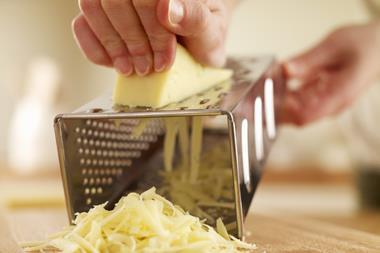

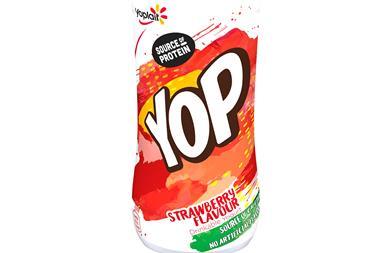
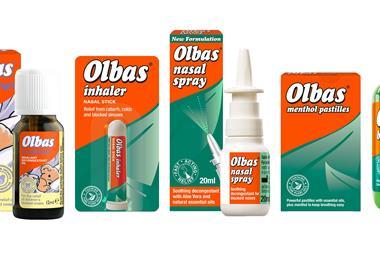

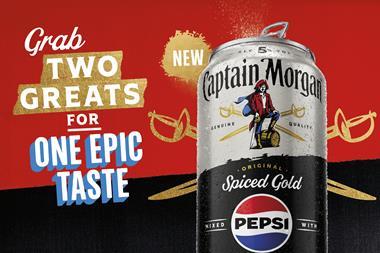

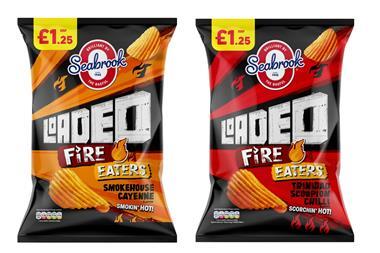
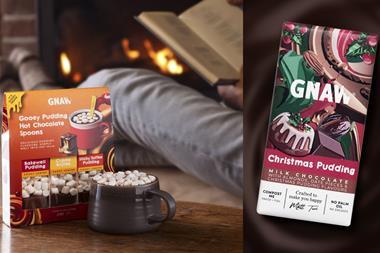
No comments yet